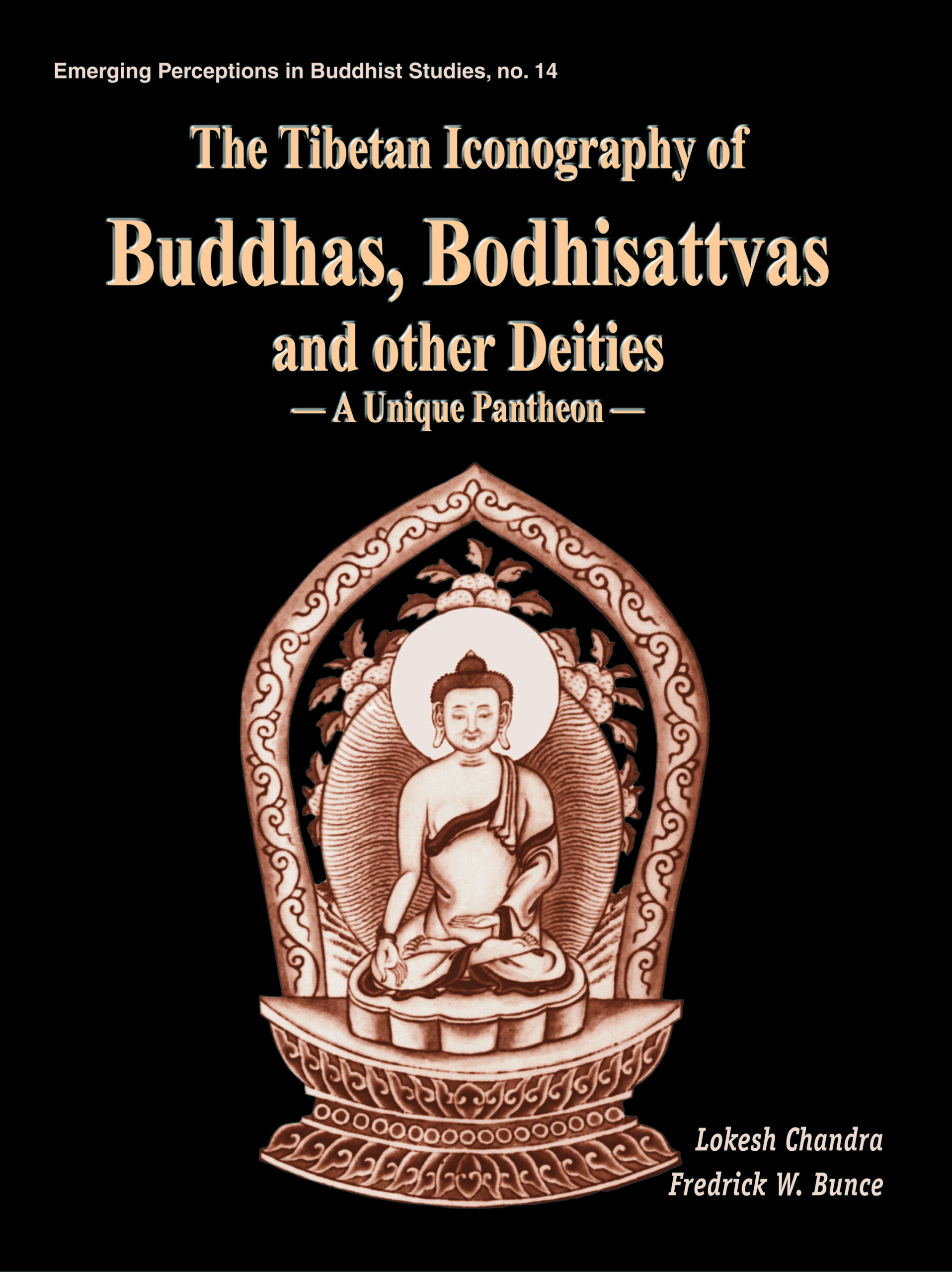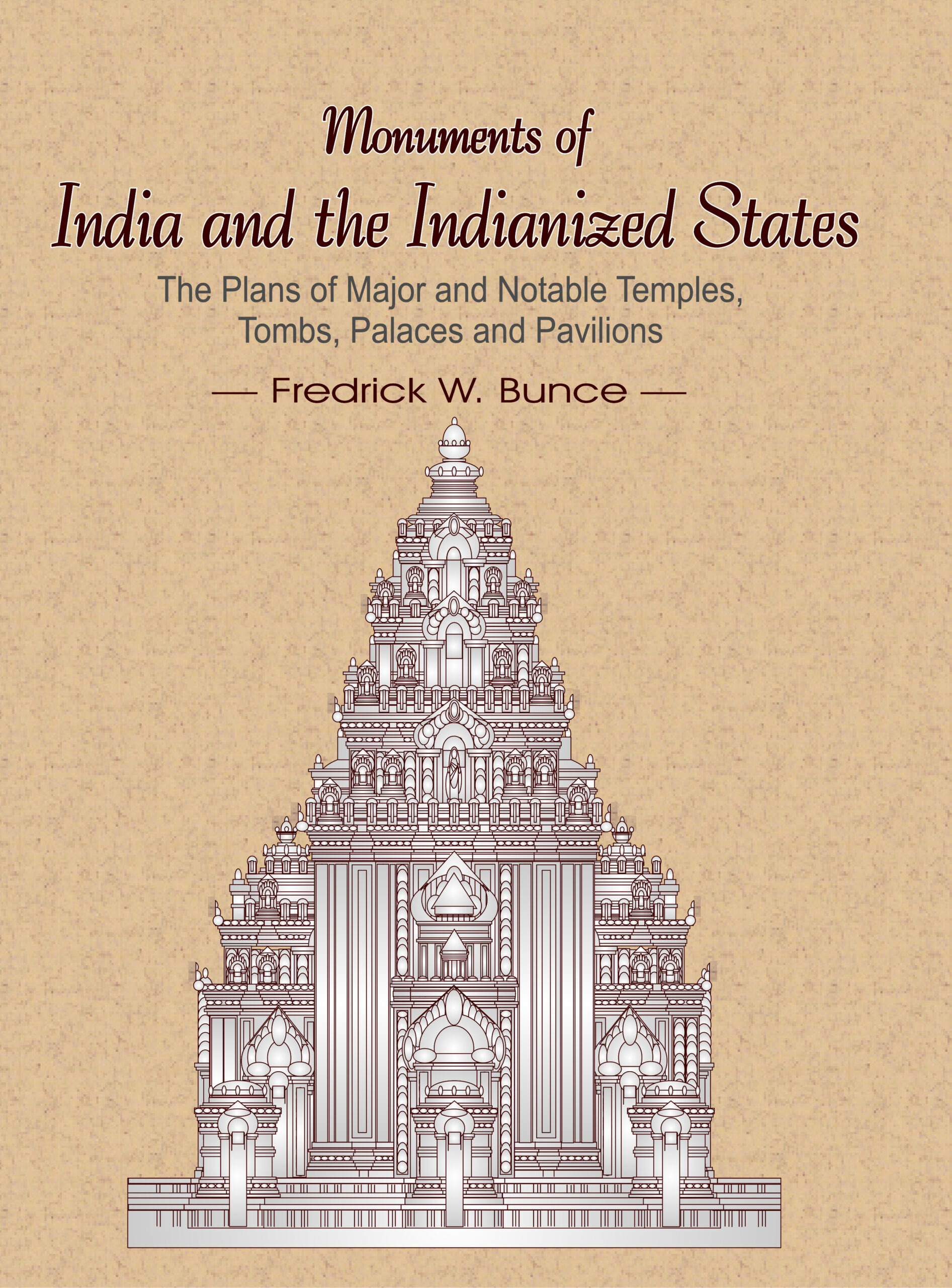-


Encyclopaedia of Bud...
Encyclopaedia of Buddhist Deities, Demigods, Godlings, Saints and Demons
with Special Focus on Iconographic Attributes (2Vols. Set) by: Fredrick W. BunceWith about 8,000 articles, this Encyclopaedia presents a panorama of Buddhist deities, demigods, godlings, demons the whole range of good and evil forces with the spotlight on the concretized, recognizable forms and their subtle symbolism.
₹7,200.00
ISBN: 9788124600207
Year Of Publication: 2017
Edition: 3rd
Pages : xxiv, xviii, 1151
Bibliographic Details : 286 Line drawings; 24 Col. illustrations; Bibliography; Appendices; Glossaries; Indices
Language : English
Binding : Hardcover
Publisher: D.K. Printworld Pvt. Ltd.
Size: 29 cm.
Weight: 3800
Beginning with a few aniconic symbols, like foot prints, a throne, the Bo tree or stupas, in the prechristian Indian art, Buddhism came to evolve a variety of picturesque representations of a Self-Existent, Superimmanent Principle: in myriad forms and emanations that range from the superbly magnificent to sheerly grotesque. Endowed with diverse iconographic attributes, Buddhist deities/saints/demons have grown, over the rolling centuries, into bewildering numbers, legions. Which all, leave alone the neophytes, not even the best of scholars can recognize! The names of the divinities and their cultural/regional perceptions owing largely to the plurality of Buddhist pantheons, have only gone on to further complicate their identification. Unveiled, for the first time, in the pages of this Encyclopaedia, is a panorama of Buddhist deities, demigods, godlings, saints and demons, with spotlight on the concretized, recognizable forms and the subtle symbolism they involve. In its nearly 8000 alphabetically arranged articles of varying lengths, it mixes gods and demons, bhiksus and btsans, the aesthetic and the grotesque in fact, nearly the whole range of good and evil forces which the inspired among the adherents of the Buddhist faith conceived so ingeniously! Professor Bunce has painstakingly marshalled a wealth of data from authoritative language sources, notably, Sanskrit, Pali, Tibetan, Newari/Nepalese, Chinese, Mongolian, Japanese, Siamese/Thai, Annamese/Viet Namese, Javanese, and Sinhalese, in his effort to capture almost the entire framework of Buddhist divinities: a multi-pantheonic framework, together with its classes, groups and hierarchies, ranging from Adi-Buddha to Arhats and yet beyond. Himself a distinguished scholar of Oriental/Buddhist Art, Dr. Bunce incorporates, in scrupulous detail, the iconographic attributes of deities: like colours, heads/eyes, hands, objects held, body, feet, asanas, mudras, ornaments, vahanas, emanations, and whether calm or wrathful which, with a generous supplement of illustrations: about 300 elegant line-drawings and several colour plates, highlight the distinctiveness of each individual figure. Also included in the Encyclopaedia are users guide, glossaries (of asanas, mudras and attributes), identification charts, a hierarchic table, and bibliographic references. Growing from years of Professor Bunces persevered research and study, this compilation is certainly the first ever to draw together most of the Buddhist divinities/mythological characters, in their distinctly recognizable forms. And is, therefore, indispensable to both the specialists and non-specialists trying to identify each from a whole host of these figural representations.
Volume 1
Foreword
Introduction
Acknowledgements
List of Figures and Plates
Users Guide
Abbreviations
Deity Entries
Bibliography
Volume 2
List of Figures
List of Plates
Users Guide
Abrreviations
Users Guide: Deity Indentification Tables
White (Skt.: sita; Tib.: dkar-po), Calm Deities
White (Skt.: sita; Tib.: dkar-po) Wrathful, Angry or Haughty Deities
Red (Skt.: rakta; Tib.: dmar-po), Calm Deities
Red (Skt.: rakta; Tib.: dmar-po), Wrathful, Angry or Haughty Deities
Blue (Skt.: nila; Tib.: sngon-po), Calm Deities
Blue (Skt.: nila; Tib.: sngon-po), Wrathful, Angry or Haughty Deities
Green (Skt.: syama; Tib.: ljang-ku), Calm Deities
Green (Skt.: syama; Tib.: ljang-ku), Wrathful, Angry or Haughty Deities
Yellow (Skt.: pita; Tib.: ser-po), Calm Deities
Yellow, (Skt.: pita; Tib.: ser-po) Wrathful, Angry or Haughty Deities
Black (Skt.: krsna; Tib.: nag-po), Wrathful Deities
Dark (Skt.: syama), Purple, Brown (Skt.: babhru; Tib.: ja) or Smoke (Grey) (Skt.: dhumavarna; Tib.: dud-kha) Coloured Deities, Wrathful Deities
Natural Skin-Colored Deities:
Calm Deities: Color not Designated in Sources
Wrathful, Angry or Haughty Deities: Color not Designated in Sources
Color Plates
Glossaries
Appendix I
Appendix II
Appendix III
Deity List
Postscript















